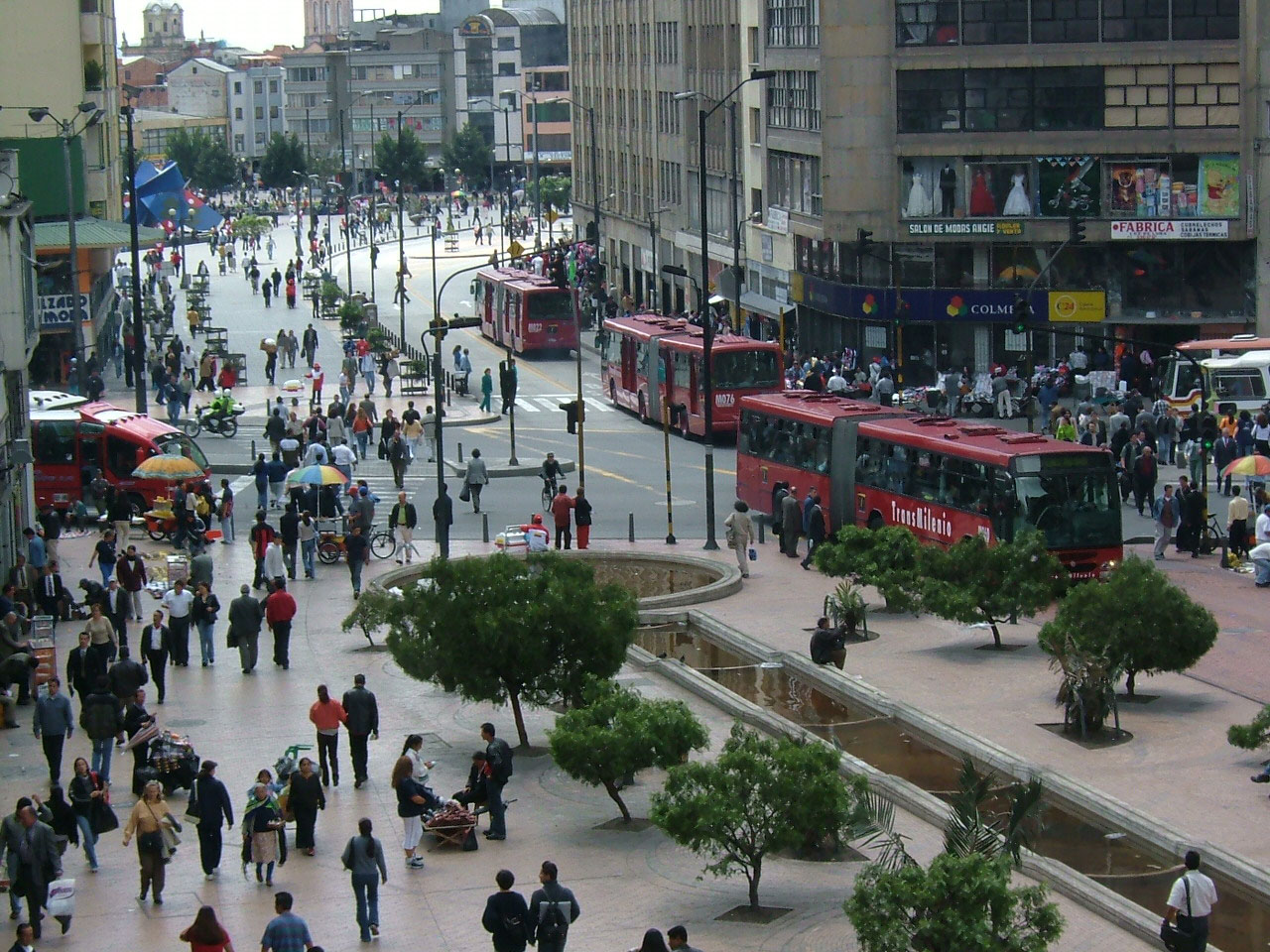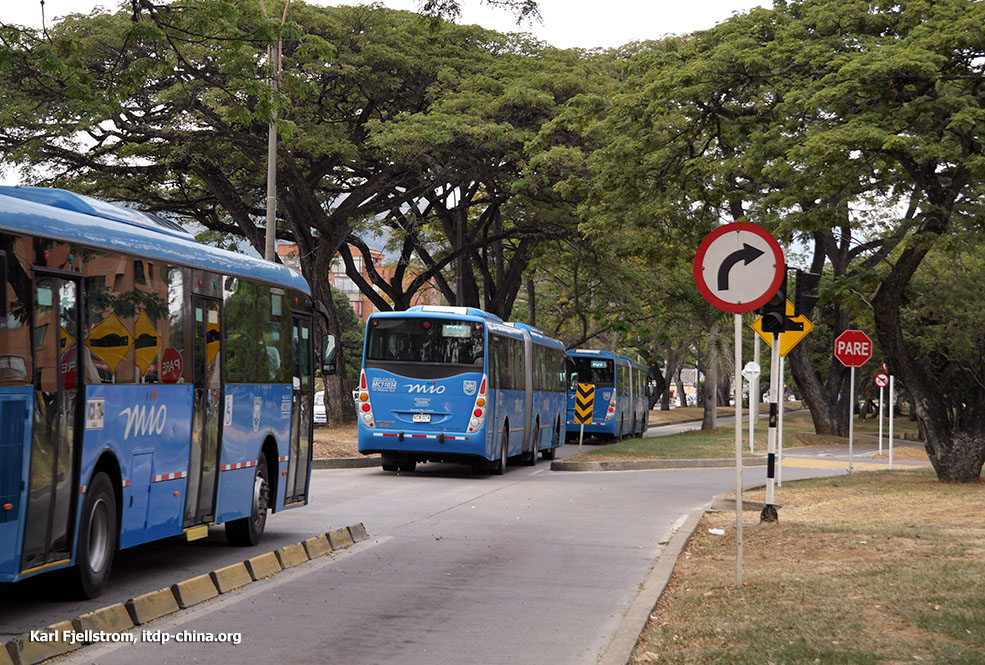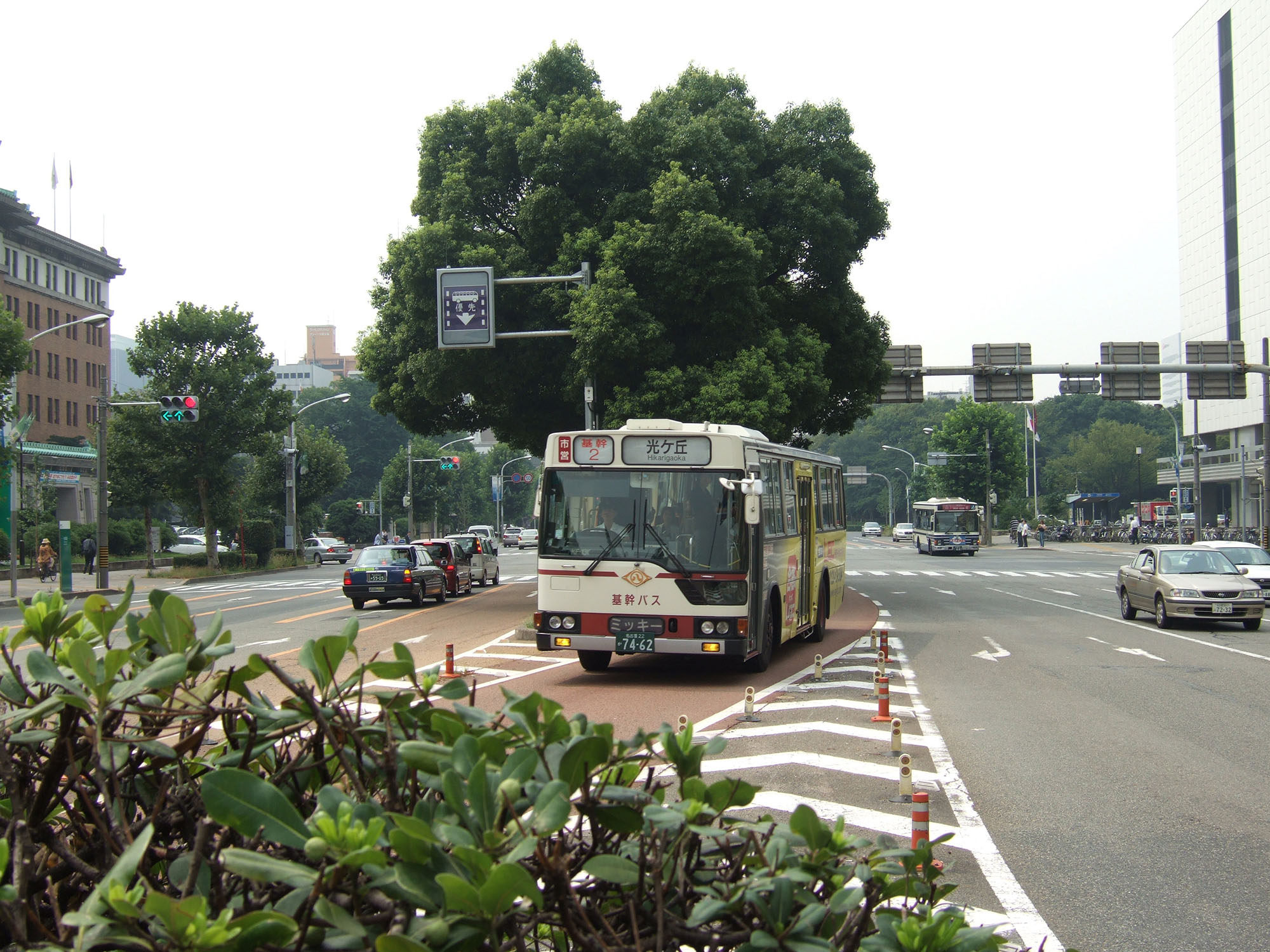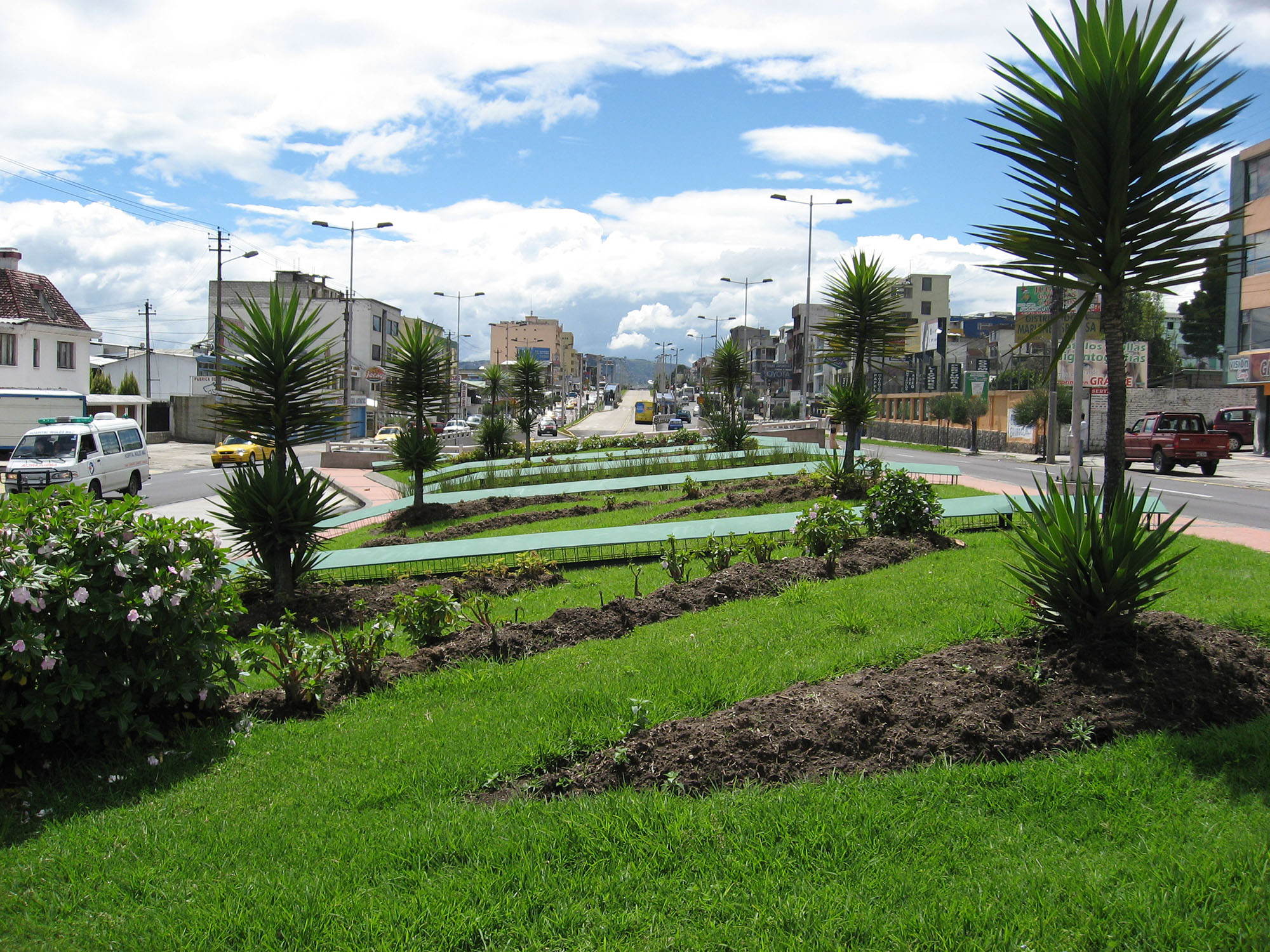23.8Urban Design and Landscaping
The smallest patch of green to arrest the monotony of asphalt and concrete is as important to the value of real estate as streets, sewers, and convenient shopping.James Felt, NYC Planning Commission, 1903–1971
23.8.1Urban Design
BRT is focused on moving passengers through a series of public spaces that are safe and accessible to all. The introduction of landscaping and urban design features can greatly enhance the experience (Figure 23.31).
BRT terminals and station environments benefit from urban design and hard landscaping by creating vehicle-free pedestrian zones that offer safe, separated transfer between modes of transport or access to further non-motorized routes. Separation occurs with the use of bollards, low-level fences, benches or other street furniture, or by uniquely textured or colored surface treatments such as pigmented pavers or enhanced paving patterns (Figure 23.31).
The transition between various public areas is delineated by changes in texture or color, even transition strips in areas where bicycles and other faster modes of non-motorized transport are brought into a pedestrianized area. Appropriate signage and information displays complement the urban design and add in the ordered use of such plazas or public places.

23.8.2Landscaping
BRT systems should add to the aesthetic quality of a city’s public space. Only the station footprint may require landscape alterations. The other areas can be enhanced with additional plantings (Figure 23.32). Greenery may also be an option as a divider between the BRT system and other traffic lanes.
The linear dimensions of bus routes can be softened and separated from private-vehicle lanes and other land uses with strips of low-level planting. Planting serves to alleviate the visual impact of hard road surfaces in generally densely populated and built urban surroundings.

Trees and plants can also provide climatic protection to pedestrian and bicycle corridors linking with the BRT system. In tropical climates, trees and vegetation can even help partially cover the station structure itself in order to reduce inside temperatures. Likewise, the retention of greenery along a BRT corridor will offset the overall urban heat-island effect, which causes urban areas to exhibit heightened temperatures (Figure 23.33). Additionally, if curb cuts and graded connections are made between impervious surfaces and adjacent vegetation, the greenery can serve to collect stormwater runoff, allow for infiltration into the water table, and mitigate flooding (as discussed earlier in Section 23.3.3 Stormwater and Drainage).

The development of the BRT system may actually provide an opportunity to create new green spaces in the city. A median can be converted from a dull concrete separator to something dominated by greenery at the same time that the busway is being constructed. In the case of BRT tunnels, there can be the opportunity to create new public spaces. In some instances, the covering of the underpass presents the opportunity for plantings and green space (Figure 23.34).
There is a science to choosing the right plants and trees within the landscape plan. The height of the tree and its eventual branches will have to clear the height of the BRT vehicles. Also, the tree’s root structure should grow vertically rather than horizontally. Root structures that grow horizontally beneath the surface will likely cause busway materials to crack and buckle. Each type of tree has inherent growth characteristics, and thus some research is needed (or experts must be hired) to determine which is most appropriate for the busway environment. The expected life of the tree is also a key factor, since it can be quite disruptive to the system to require a new set of trees after only a few decades.

Local weather conditions will also determine the desirability of whether deciduous trees or coniferous trees are appropriate. A deciduous tree will shed its leaves during the colder seasons, and thus more heat and sunlight will penetrate to the ground during this period. A deciduous tree is thus part of an effective passive solar strategy for cities that experience both warm and cold seasons. However, one disadvantage of deciduous trees is the possible need to clean fallen leaves from the BRT infrastructure. By contrast, cities without cold seasons may prefer trees that do not shed leaves. These types of trees will provide shade year-round in consistently tropical or warm climates.
Landscaping should take note of existing underground services by limiting the use of species with intrusive root systems. Planting should also be designed being mindful of road infrastructure requirements, such as sight lines and maintenance requirements. Landscaping must be robust and not susceptible to the harsh microclimatic environment experienced in close proximity to roadway infrastructure. Indigenous species are, as so often proven, the only sustainable option when designing landscaping associated with public transport, as irrigation is not always an option along lengthy public transport corridors. Indigenous species create fewer problems regarding invasive species and are also typically more suited to local soil and water conditions. Priority should be given to selecting indigenous trees rather than species that are not common to the area.